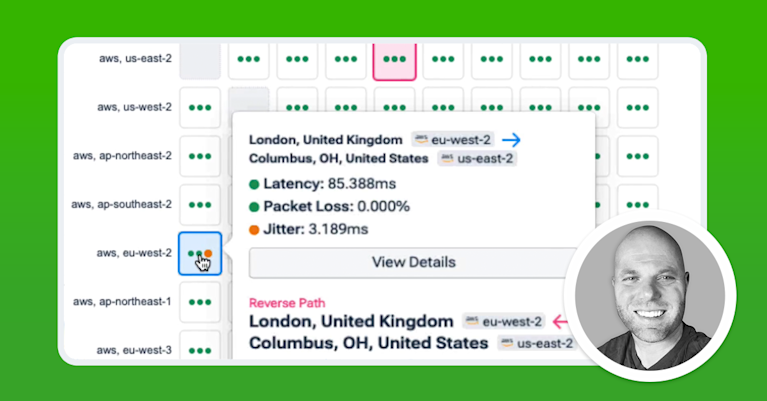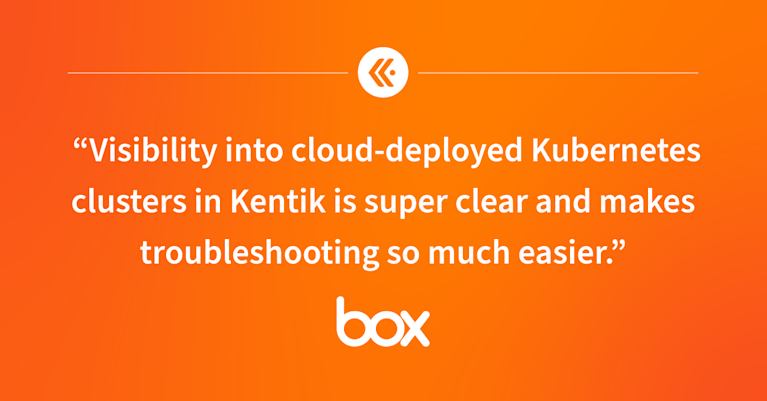What is a VPC (Virtual Private Cloud)?
As organizations increasingly rely on public cloud infrastructure to host their applications and services, understanding key cloud networking concepts becomes essential. One such concept is the Virtual Private Cloud or VPC. This article will explain what a VPC is, why it’s important, and how it can be managed and monitored using network intelligence platforms like Kentik.
What is a VPC?
A Virtual Private Cloud (VPC) is an isolated environment within a public cloud that allows organizations to host resources without directly exposing them to the public internet. A VPC creates a private network within a public cloud, providing an added layer of security and control over the resources hosted within it.
VPCs enable organizations to define their own private IP address space, create subnets, configure routing tables, and set up network gateways, all while benefiting from the scalability, reliability, and cost efficiencies of public cloud infrastructure.
Why are VPCs Important?
There are several key reasons why VPCs are essential for modern cloud architectures:
1. Security: By isolating resources within a private network, VPCs provide an added layer of protection, ensuring that sensitive workloads and data are not directly exposed to the public internet. Access to resources within a VPC can be further controlled using security groups, network access control lists (NACLs), and other security features offered by public cloud providers.
2. Control and Customization: VPCs allow organizations to customize their network configurations, such as IP address ranges, subnets, and routing tables, to meet specific requirements. This level of control enables businesses to design and manage their cloud networks to best align with their security, compliance, and operational needs.
3. Performance: By segmenting network resources and traffic within VPCs, organizations can optimize the performance of their applications and services. This segmentation can help reduce latency, minimize network congestion, and improve the overall user experience.
4. Cost Efficiency: VPCs enable organizations to leverage the cost efficiencies of public cloud infrastructure while maintaining control over their resources. By hosting resources within a VPC, organizations can take advantage of the pay-as-you-go model and the economies of scale offered by public cloud providers.
VPC Components and Architecture
A typical VPC architecture consists of several components:
-
Subnets: A subnet is a segment of a VPC’s IP address range. Subnets are used to separate resources and traffic within a VPC and can be designated as either public or private, depending on whether they require direct access to the internet.
-
Routing Tables: Routing tables determine how traffic is directed between subnets and other networks. They consist of route entries that specify which network traffic should be directed to which destination.
-
Internet Gateways: An internet gateway is a horizontally scalable, redundant, and highly available VPC component that allows communication between instances in your VPC and the internet. It performs NAT (Network Address Translation) for instances with public IPv4 addresses.
-
NAT Gateways: A NAT gateway enables instances in a private subnet to access the internet while preventing inbound internet traffic from reaching those instances. These gateways allow resources within a private subnet to download updates or communicate with other services without being directly accessible from the internet.
-
Virtual Private Gateways and VPN Connections: A virtual private gateway is a VPC component that provides connectivity between your VPC and your on-premises network via a VPN connection. These connections enable organizations to extend their existing networks to the cloud securely.
-
VPC Peering: VPC peering enables private connections between two or more VPCs, allowing resources in different VPCs to communicate as if they were on the same network. Such connections help improve security, reduce network latency, and decrease network expenses when resources are hosted across multiple VPCs or cloud providers.
Transitioning to cloud quickly complicates networking. Learn the top 3 AWS gotchas and how to avoid them.

What are the Benefits of Using a VPC?
Utilizing a Virtual Private Cloud (VPC) in your cloud infrastructure offers several key benefits that can enhance the security, control, and efficiency of your organization’s network. By leveraging the benefits of VPCs, organizations can build secure, customizable, and efficient cloud networks that align with their unique requirements and objectives. Here are some of the main advantages of using a VPC:
1. Enhanced Security: A VPC provides an isolated environment within a public cloud, ensuring that your resources are not directly exposed to the public internet. This isolation, combined with the ability to implement security groups, network access control lists (NACLs), and other security features, significantly improves the protection of your sensitive workloads and data.
2. Customizable Network Configurations: VPCs allow organizations to define their own private IP address space, create subnets, configure routing tables, and set up network gateways. This level of customization enables businesses to design and manage their cloud networks in a way that best aligns with their security, compliance, and operational needs.
3. Improved Performance: By segmenting network resources and traffic within VPCs, organizations can optimize the performance of their applications and services. This segmentation helps reduce latency, minimize network congestion, and ultimately enhance the overall user experience.
4. Cost Efficiency: VPCs enable organizations to take advantage of the pay-as-you-go model and economies of scale offered by public cloud providers. By hosting resources within a VPC, you can leverage the cost efficiencies of public cloud infrastructure while maintaining control over your resources.
5. Hybrid and Multi-Cloud Support: VPCs can be connected to on-premises networks via virtual private gateways and VPN connections, allowing organizations to securely extend their existing networks to the cloud. Additionally, VPC peering enables private connections between VPCs across different regions or cloud providers, supporting a multi-cloud strategy.
6. Scalability and Flexibility: VPCs provide the scalability and flexibility of public cloud infrastructure, allowing organizations to easily add or remove resources as needed. This agility enables businesses to quickly respond to changes in demand, ensuring that they only pay for the resources they actually use.
VPCs and Multitenancy in the Cloud
A key aspect of cloud computing is the ability to support multitenancy, which allows multiple users or organizations (called tenants) to share resources on the same physical infrastructure. This sharing of resources enables cloud providers to offer cost-efficient services while maintaining isolation between tenants. VPCs play a crucial role in achieving this isolation and ensuring that each tenant’s resources and data remain secure.
How VPCs Enable Multitenancy
VPCs facilitate multitenancy by creating isolated virtual networks within the shared physical infrastructure of a public cloud. Each tenant can have one or more VPCs, which ensures that their resources and network configurations are separated from those of other tenants. This separation not only enhances security but also allows tenants to customize their network settings according to their specific needs.
The isolation provided by VPCs prevents potential issues that could arise due to resource sharing, such as the “noisy neighbor” problem, where one tenant’s resource usage negatively impacts the performance of another tenant’s resources. By allocating resources within separate VPCs, cloud providers can maintain a high level of performance and security for each tenant.
Multitenancy in Hybrid and Multi-Cloud Environments
VPCs are also essential in supporting multitenancy in hybrid and multi-cloud environments. Organizations can extend their on-premises networks to the cloud using VPCs and VPN connections, enabling seamless integration between private data centers and public cloud resources. Similarly, VPC peering allows private connections between VPCs across different cloud providers, supporting a multi-cloud strategy.
In these scenarios, VPCs ensure that the security, control, and isolation associated with on-premises networks are preserved, while still leveraging the cost efficiencies, scalability, and flexibility of public cloud infrastructure.
VPC Terminology Across Cloud Providers
While the concept of a Virtual Private Cloud (VPC) is consistent across major cloud providers, each provider may use slightly different terminology or offer additional features specific to their platforms. Below, we’ve listed the equivalent terms or service names for VPCs used by AWS, Google Cloud, IBM Cloud, and Microsoft Azure:
Amazon Web Services (AWS)
AWS simply refers to its VPC service as Amazon VPC. It provides the same basic functionality described in this article, allowing customers to create isolated networks within the AWS cloud to host their resources.
Google Cloud
Google Cloud uses the term Virtual Private Cloud (VPC) to describe its offering. It is quite similar to Amazon VPC in terms of functionality, with some configuration options and feature variations.
IBM Cloud
IBM Cloud offers Virtual Private Cloud (VPC) as part of its cloud services portfolio. Like AWS and Google Cloud, IBM’s VPC service allows customers to create isolated networks to host their resources within the IBM Cloud environment.
Microsoft Azure
Microsoft Azure refers to its VPC offering as Virtual Network (VNet). While the name differs, the concept remains the same: VNets allow customers to create private, isolated networks within the Azure cloud to securely host their resources.
Despite these minor differences in terminology, the overall concept and purpose of a VPC remain consistent across cloud providers. This consistency allows organizations to adopt a multi-cloud strategy and manage their resources effectively, regardless of their specific cloud provider(s).
VPC Management and Network Observability
Managing VPCs effectively ensures optimal performance, security, and cost efficiency. Network Intelligence Platforms, like Kentik, can help organizations gain visibility into their VPCs and the traffic flowing within and between them.
By ingesting data sources such as flow logs, latency metrics, and synthetic performance tests, network intelligence platforms can provide insights into the health and performance of your VPCs. Kentik enables organizations to identify, understand, and resolve potential issues that may arise within their VPC infrastructure.
Kentik’s network intelligence platform offers comprehensive support for managing VPCs across multiple cloud environments, including AWS, Google Cloud, Microsoft Azure, and Oracle Cloud Infrastructure (OCI). By providing visibility into the network behavior of resources hosted within VPCs, Kentik can help organizations optimize their cloud networks and ensure the best possible performance and security.
To see how Kentik can help you manage your VPCs and improve your organization’s cloud networking, request a demo or sign up for a free trial today.
Frequently Asked Questions: VPC
Q: Can I have multiple VPCs within a single cloud provider account?
A: Yes, you can create and manage multiple VPCs within a single cloud provider account. This enables you to isolate and organize resources based on specific projects, departments, or compliance requirements.
Q: How do I connect my on-premises network to my VPC?
A: You can connect your on-premises network to your VPC using a Virtual Private Gateway and a VPN connection. This enables secure communication between your VPC and your existing network infrastructure.
Q: Can I connect VPCs across different regions or cloud providers?
A: Yes, you can establish connections between VPCs located in different regions or even across different cloud providers using VPC peering or by setting up VPN connections. This allows you to extend your private network across multiple cloud environments and regions.
Q: How can I monitor and manage traffic within my VPC?
A: Most public cloud providers offer native monitoring and management tools that can provide insights into traffic and resource usage within your VPC. Additionally, third-party network intelligence platforms like Kentik can further enhance visibility and control by ingesting data sources such as flow logs, latency metrics, and synthetic performance tests. These platforms can help you identify, understand, and resolve potential issues within your VPC infrastructure.
Q: How do I ensure high availability and fault tolerance within my VPC?
A: To ensure high availability and fault tolerance within your VPC, you can distribute your resources across multiple Availability Zones (AZs) or regions provided by your cloud provider. This approach helps protect your applications and services from single points of failure, ensuring that they continue to operate even if an entire AZ or region experiences an outage. Additionally, you can implement load balancing and auto-scaling to distribute traffic and automatically adjust resource capacity based on demand.


